Abstract
There are two isotypes of C4--C4A and C4B--, encoded within the major histocompatibility complex with quite different properties. In this study we have compared purified C4A and C4B with regard to their ability to prevent immune complex precipitation and to enhance the binding of both preformed and nascent immune complexes to the receptor CR1 on red cells. C4A was modestly more effective than C4B at inhibiting immunoprecipitation, particularly in antibody excess. In the CR1 binding assay C4A was markedly more effective than C4B in enhancing binding to CR1. This difference was seen with both preformed and nascent immune complexes at equivalence and antibody excess. Thus the major differences between C4A and C4B in regard to immune complex handling is at the level of CR1 binding. Given the strong association of C4A* QO alleles with immune complex-mediated diseases like systemic lupus erythematosus, these findings have important pathogenetic implications.
Full text
PDF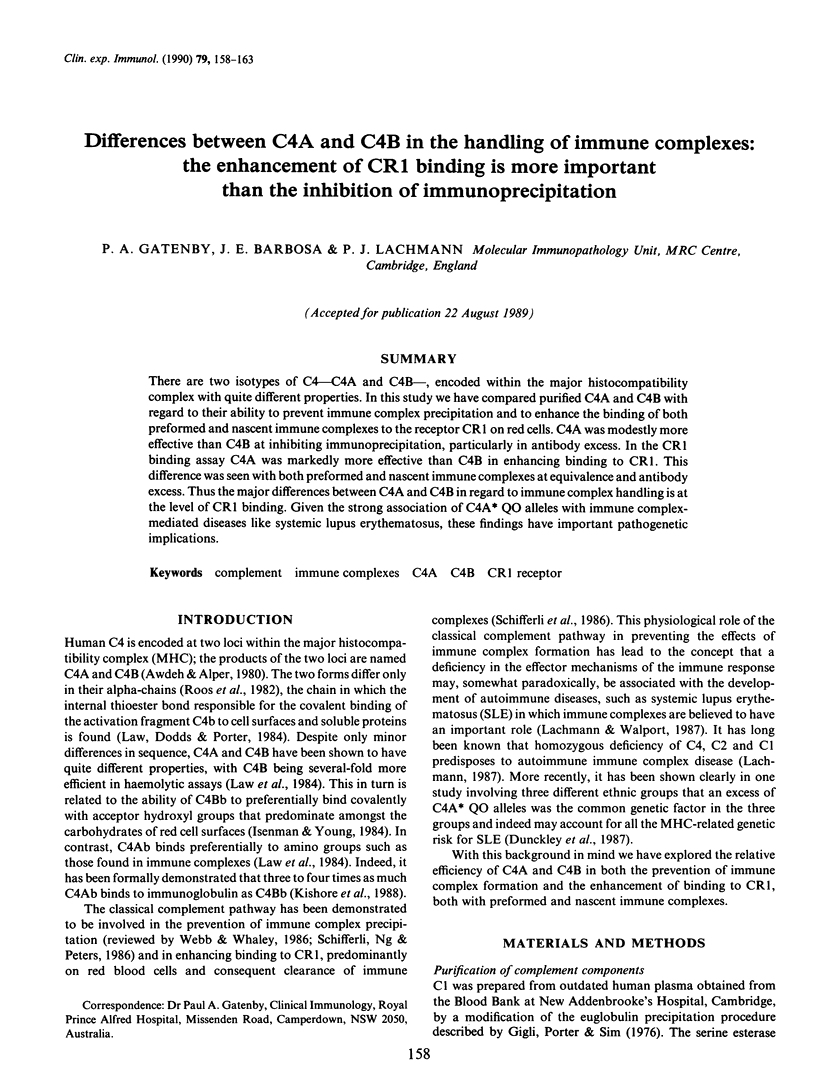
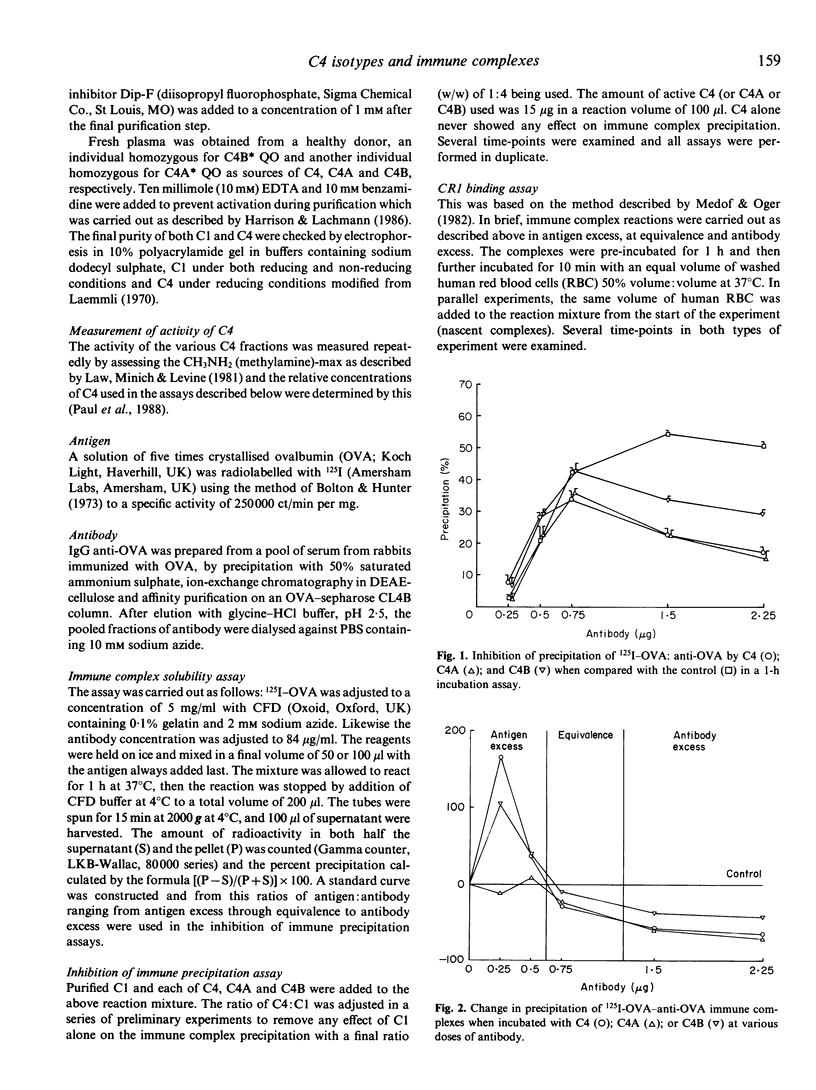
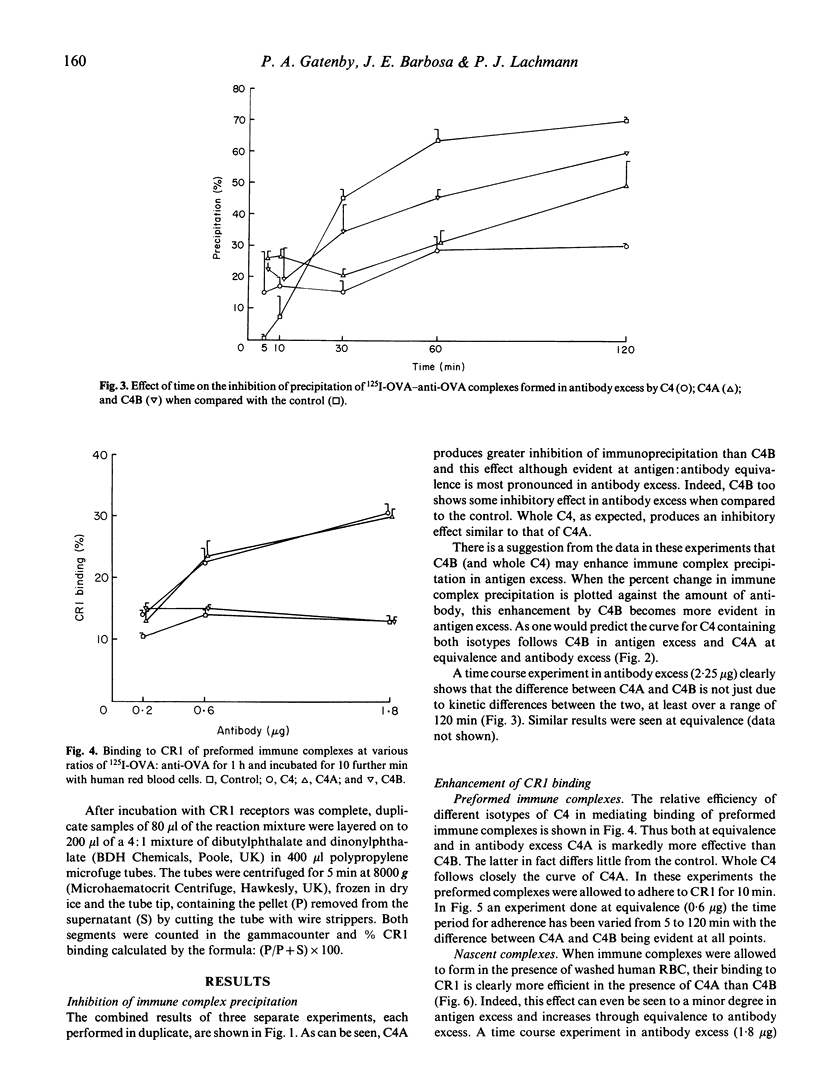
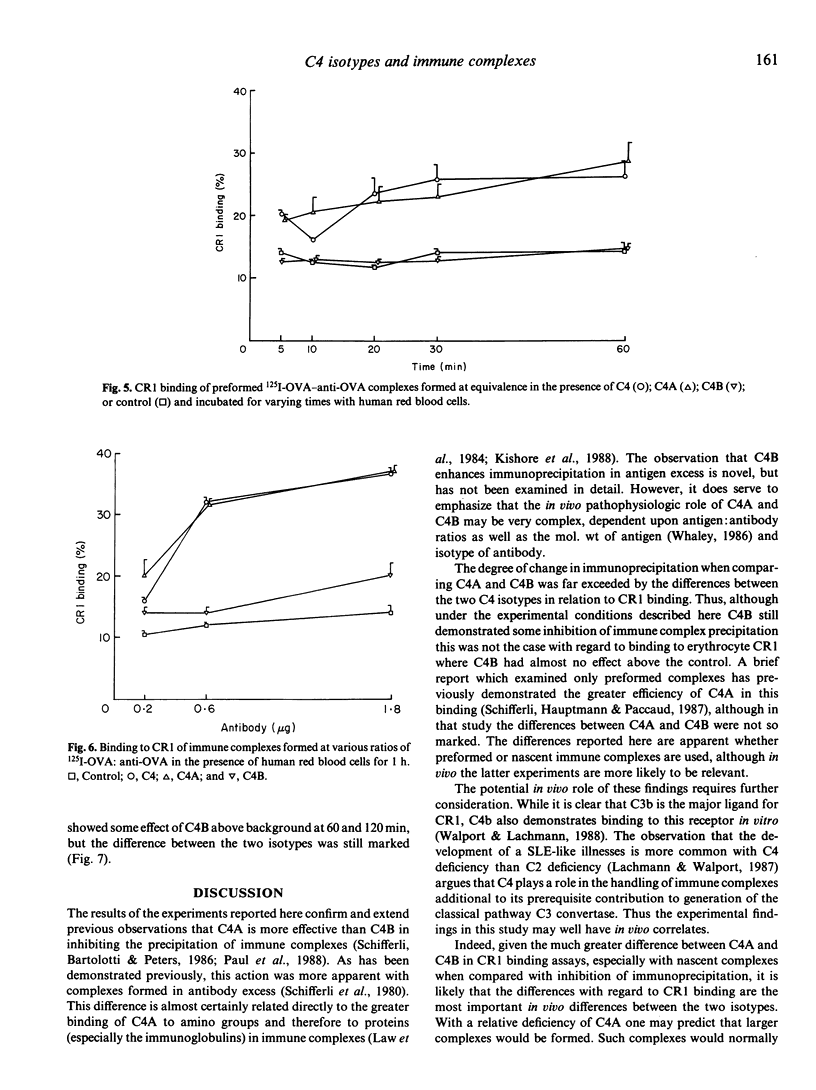

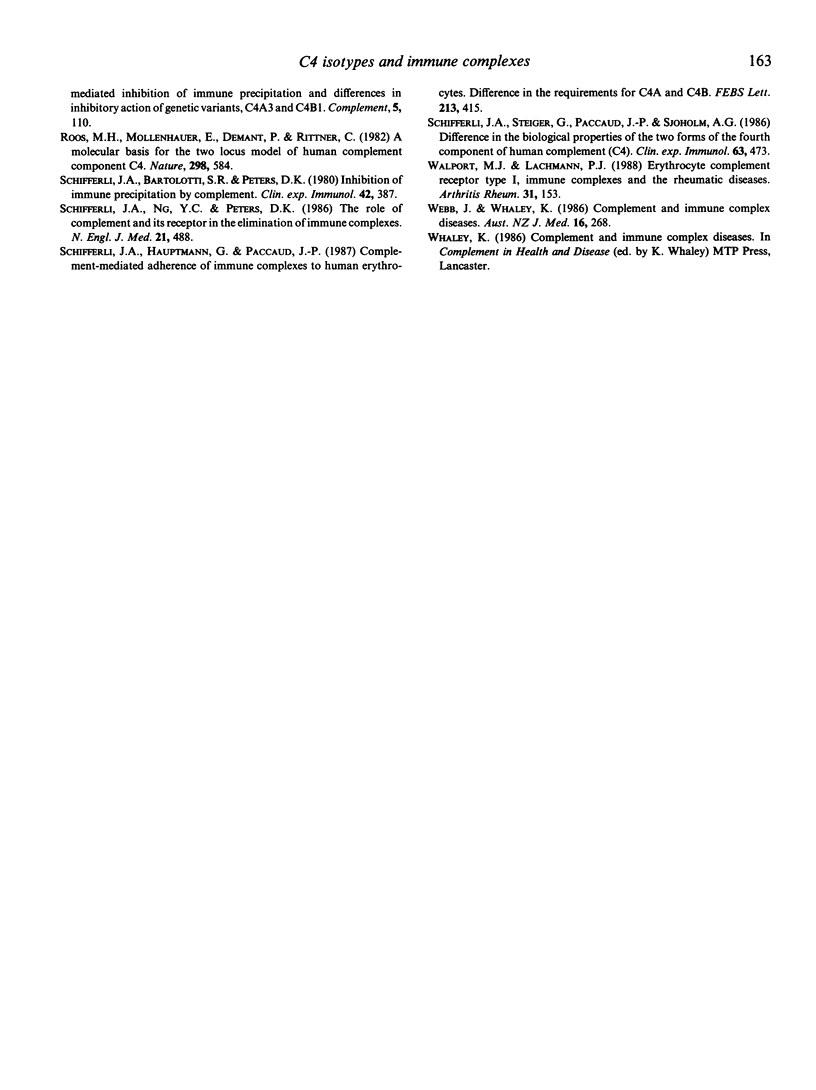
Selected References
These references are in PubMed. This may not be the complete list of references from this article.
- Awdeh Z. L., Alper C. A. Inherited structural polymorphism of the fourth component of human complement. Proc Natl Acad Sci U S A. 1980 Jun;77(6):3576–3580. doi: 10.1073/pnas.77.6.3576. [DOI] [PMC free article] [PubMed] [Google Scholar]
- Bolton A. E., Hunter W. M. The labelling of proteins to high specific radioactivities by conjugation to a 125I-containing acylating agent. Biochem J. 1973 Jul;133(3):529–539. doi: 10.1042/bj1330529. [DOI] [PMC free article] [PubMed] [Google Scholar]
- Fielder A. H., Walport M. J., Batchelor J. R., Rynes R. I., Black C. M., Dodi I. A., Hughes G. R. Family study of the major histocompatibility complex in patients with systemic lupus erythematosus: importance of null alleles of C4A and C4B in determining disease susceptibility. Br Med J (Clin Res Ed) 1983 Feb 5;286(6363):425–428. doi: 10.1136/bmj.286.6363.425. [DOI] [PMC free article] [PubMed] [Google Scholar]
- Gigli I., Porter R. R., Sim R. B. The unactivated form of the first component of human complement, C1. Biochem J. 1976 Sep 1;157(3):541–548. doi: 10.1042/bj1570541. [DOI] [PMC free article] [PubMed] [Google Scholar]
- Isenman D. E., Young J. R. The molecular basis for the difference in immune hemolysis activity of the Chido and Rodgers isotypes of human complement component C4. J Immunol. 1984 Jun;132(6):3019–3027. [PubMed] [Google Scholar]
- Kishore N., Shah D., Skanes V. M., Levine R. P. The fluid-phase binding of human C4 and its genetic variants, C4A3 and C4B1, to immunoglobulins. Mol Immunol. 1988 Sep;25(9):811–819. doi: 10.1016/0161-5890(88)90117-4. [DOI] [PubMed] [Google Scholar]
- Lachmann P. J. Heberden oration 1986. Complement--friend or foe? Br J Rheumatol. 1987 Dec;26(6):409–415. doi: 10.1093/rheumatology/26.6.409. [DOI] [PubMed] [Google Scholar]
- Lachmann P. J., Walport M. J. Deficiency of the effector mechanisms of the immune response and autoimmunity. Ciba Found Symp. 1987;129:149–171. doi: 10.1002/9780470513484.ch11. [DOI] [PubMed] [Google Scholar]
- Laemmli U. K. Cleavage of structural proteins during the assembly of the head of bacteriophage T4. Nature. 1970 Aug 15;227(5259):680–685. doi: 10.1038/227680a0. [DOI] [PubMed] [Google Scholar]
- Law S. K., Dodds A. W., Porter R. R. A comparison of the properties of two classes, C4A and C4B, of the human complement component C4. EMBO J. 1984 Aug;3(8):1819–1823. doi: 10.1002/j.1460-2075.1984.tb02052.x. [DOI] [PMC free article] [PubMed] [Google Scholar]
- Law S. K., Minich T. M., Levine R. P. Binding reaction between the third human complement protein and small molecules. Biochemistry. 1981 Dec 22;20(26):7457–7463. doi: 10.1021/bi00529a020. [DOI] [PubMed] [Google Scholar]
- Medof M. E., Oger J. J. Competition for immune complexes by red cells in human blood. J Clin Lab Immunol. 1982 Jan;7(1):7–13. [PubMed] [Google Scholar]
- Paccaud J. P., Steiger G., Sjöholm A. G., Spaeth P. J., Schifferli J. A. Tetanus toxoid-anti-tetanus toxoid complexes: a potential model to study the complement transport system for immune complex in humans. Clin Exp Immunol. 1987 Aug;69(2):468–476. [PMC free article] [PubMed] [Google Scholar]
- Paul L., Skanes V. M., Mayden J., Levine R. P. C4-mediated inhibition of immune precipitation and differences in inhibitory action of genetic variants, C4A3 and C4B1. Complement. 1988;5(3):110–119. doi: 10.1159/000463045. [DOI] [PubMed] [Google Scholar]
- Schifferli J. A., Bartolotti S. R., Peters D. K. Inhibition of immune precipitation by complement. Clin Exp Immunol. 1980 Nov;42(2):387–394. [PMC free article] [PubMed] [Google Scholar]
- Schifferli J. A., Hauptmann G., Paccaud J. P. Complement-mediated adherence of immune complexes to human erythrocytes. Difference in the requirements for C4A and C4B. FEBS Lett. 1987 Mar 23;213(2):415–418. doi: 10.1016/0014-5793(87)81533-8. [DOI] [PubMed] [Google Scholar]
- Schifferli J. A., Ng Y. C., Peters D. K. The role of complement and its receptor in the elimination of immune complexes. N Engl J Med. 1986 Aug 21;315(8):488–495. doi: 10.1056/NEJM198608213150805. [DOI] [PubMed] [Google Scholar]
- Schifferli J. A., Steiger G., Paccaud J. P., Sjöholm A. G., Hauptmann G. Difference in the biological properties of the two forms of the fourth component of human complement (C4). Clin Exp Immunol. 1986 Feb;63(2):473–477. [PMC free article] [PubMed] [Google Scholar]
- Walport M. J., Lachmann P. J. Erythrocyte complement receptor type 1, immune complexes, and the rheumatic diseases. Arthritis Rheum. 1988 Feb;31(2):153–158. doi: 10.1002/art.1780310201. [DOI] [PubMed] [Google Scholar]
- Webb J., Whaley K. Complement and immune complex diseases. Aust N Z J Med. 1986 Apr;16(2):268–278. doi: 10.1111/j.1445-5994.1986.tb01177.x. [DOI] [PubMed] [Google Scholar]


